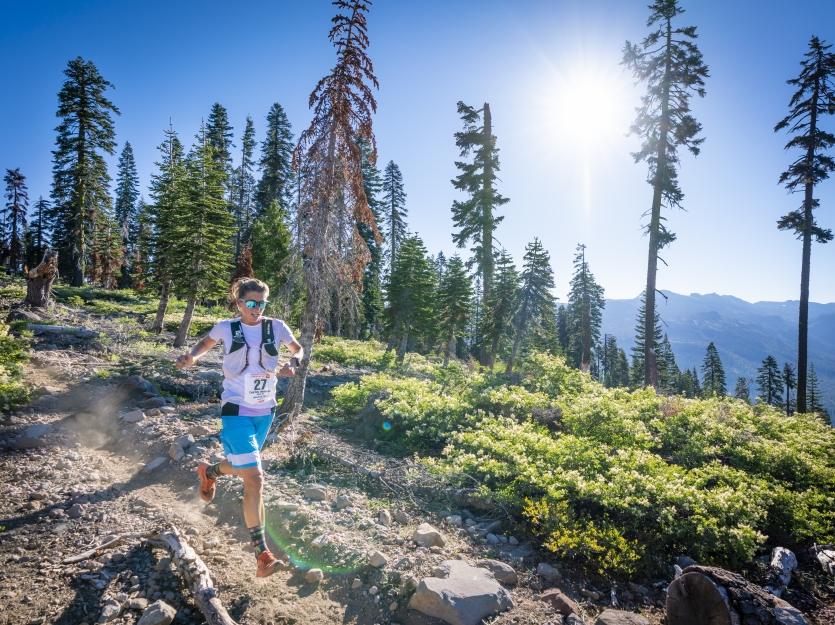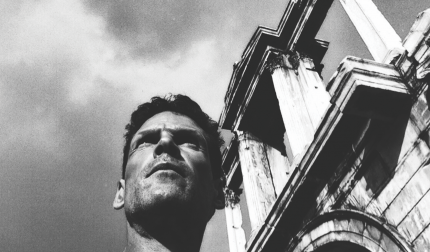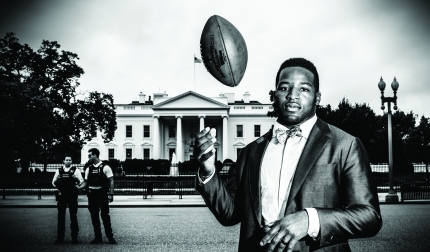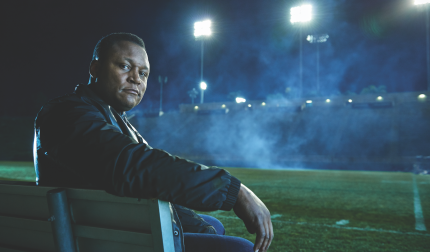The Moab 240 is more than just an endurance race. It’s a test of how far the human mind can push the body through unconscionable pain. The 238.3-mile course winds through desert, canyons, up and down the steep jagged paths of two of Utah’s most picturesque mountain ranges. When Courtney Dauwalter finished the race in just under 58 hours—a full 10 hours ahead of the second-place runner and first male to finish, it opened a lot of eyes in the distance running community, including her own.
“I had never run a race that long before, so I didn’t know what to expect,” Dauwalter says. “For that race, it was about changing my mindset a little bit, maybe not thinking about it as a race, even though I was definitely going to race it. The cutoff for finishing the race was something like six days. So going into it, I was accepting that this was all I was doing. It didn’t matter however many days it took—three days, four days—just keeping that in mind at the start line that this is all you're doing. You have no reason to stop; you have no reason to quit. Rolling with that thought the whole time. You have plenty of time, so just keep moving through this desert and enjoy the ride.”

At the Moab race, there are aid stations where runners can sleep on a cot for up to six hours at a time. With the race going through both extremely warm temperatures and below freezing winds (“I think it got down to nine degrees on the second night,” Dauwalter says.), strategy is an important part of finishing first among the 150 entrants. Dauwalter’s strategy? She took two naps the entire time—one for 20 minutes, and a second for one minute. “It was the greatest one-minute nap of all time,” she says. I felt completely rejuvenated.
On the course, Dauwalter found herself falling asleep while she was running. At night, shadows would give way to hallucinations. She remembered visualizing a leopard lying in a hammock. She waved hello to an imaginary man playing a cello.
“You go through these amazing highs and lows when you race for that long,” she says. “At times, you feel completely fresh, and your body feels totally fine. And then the wave comes crashing down and your running some whimpering miles in constant pain. But you just have to know that the wave goes out again and eventually you will feel better. Sometimes when I was feeling bad, I’d take in some calories, hoping maybe that might make my body happy again.”
Sustaining herself along the trail is something Dauwalter continues to refine. “In my first races, I would kind of go along with what most other people were doing, and it didn’t always work for me,” she says. “It’s pretty much trial and error out there. You don’t want to eat something only to leave it in the bushes a few miles later because you can’t hold it down.”
For the 238 miles, she relied heavily on water, Gatorade and Tailwind, a powder that you can add to water for electrolytes and instant calories. She’d also snack on Honey Stinger gels for some instant nutrition. And for food? “They had these amazing cheese quesadillas at the aid stations, and they were delicious!” she says laughing. “I would hammer a few of those down. Maybe that was the secret!”

As a kid, Dauwalter enjoyed running track and cross-country athlete at her high school in Minnesota. But Nordic skier was her first passion. “That’s the sport I decided to pursue at the University of Denver,” she says. I left running behind for a little while during that time. After college, I moved to Mississippi for work, and that kind of made cross country skiing a little harder (laughs). So I went back to running every day. I would just sign up for local 5K, 10K, and half-marathon races. That got me wanting to try a road marathon. I loved it right off the bat. I couldn't believe I didn't die during the race (laughs). I had no idea that there's this whole world of races that were way longer than that.
Dauwalter entered the ultramarathon world in 2012, running a 50K and then a 50-mile race. “I was always the type of person that wonders ‘What’s next?’ So after the 50-mile race, I signed up for 100-miler. And I didn’t finish it. I hadn’t unlocked the mental piece of it yet, the fighting with your brain part of it. I don’t think I gave that first 100-mile race the respect it deserved. I didn’t understand all the factors that go into running for that long.”
For the next year, Dauwalter went back to the drawing board to try to refine the approach she needed to go the 100-mile distance. “By then, I had a whole year running trails under my belt,” she says. In that year I accumulated more basic knowledge of trail running and, and what I could eat or not eat during that. I accumulated like miles and the long hours of pounding legs that you’ve just got to get used to. But I think the mental piece for me was the biggest factor in that second race. I went into it with a mindset of I’m not quitting. There's no excuse. There's no reason why I’m not going to finish this race, no matter how long it takes me.”
Since then, her success in these most intense distance races has been unparalleled. Most recently, Dauwalter finished first among women this past June against a highly competitive field in the Western States 100 in northern California. Her time of 17 hours and 27 minutes was the second fastest women’s time in the history of the race. Her continued success at these great distances, including winning some races outright over the men, has brought her a newfound celebrity, as people look to examine her training style for clues to her greatness as an ultramarathoner. “I actually had to get an Instagram and Twitter account,” she says laughing. “I’m not even sure what I’m supposed to do with them. I’m grateful that people are interested in what I’m doing.”
Dauwalter often laughs when people try to pick apart her races for clues to her success. And in some ways, maybe that’s the secret to her success. She doesn’t allow herself to get bogged down in the details of her preparation. She’ll put in 100-mile weeks, which may seem tame in comparison to other ultra-marathoners. But she genuinely enjoys the process of exploring her running capabilities. With each race, her mind gets stronger, and that pushes her body further and faster. She has no idea where the next road will take her in her journey for higher performance. She only goes into each race with enough training to respect the race and an unfailing belief that she will finish it.
At age 33, Dauwalter can’t say whether or not she’s entering her prime. Because in this game of mental fortitude, do we accept conventional wisdom as reality, or do we try to keep unlocking doors in the brain to find our maximum potential? “That’s the fun part, right? There are people running these races and winning in their 40s. There are people in their 50s and 60s running and finishing these races. Maybe the wisdom that they have is making them better? I hope there are a lot more years in this for me.”
In the future, Dauwalter has her eyes set on a few new barriers. There’s talk of a potential 500-mile race over 10 days in 2019. In the near future, she’ll be running the Tahoe 200 in September. And she’s even more excited about the notorious Big Backyard race in Tennessee this October. In the race, runners have one hour to complete a four-mile loop. If they make it back to the starting corral within the hour, they can run the loop again. The last person left running who can complete a full loop alone will win the race. “I think it will be a really cool physical and mental challenge,” she says, “because there is no actual finish line that you get to look toward as your beacon. If someone else is going, then you just have to find the mental and physical strength to go out and run another lap if you want to finish.” Last year’s winner covered over 200 miles before claiming victory.
In most people’s minds, not knowing if you could, literally, be running for days would be intimidating. For Dauwalter, it’s the natural evolution of limit-testing for an ultramarathoner. “Who really knows what the limit is,” she says. “If more people get into it, we can really get after it and break down all kinds of barriers. I think we’ve only scratched the surface of what we are really capable of achieving.”





